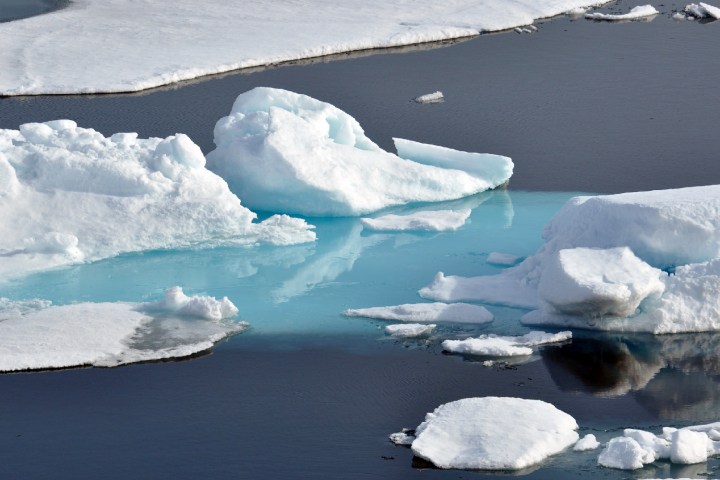
How do you solve a problem of this scale? Well, you need a similarly ambitious idea, and that’s exactly what researchers from Arizona State University — led by astrophysicist Professor Steven Desch — have come up with.
In a new paper, the investigators describe a geo-engineering project so massive that, with a couple of evil tweaks, it could be the villainous plot out of a Roger Moore-era James Bond movie. Basically it involves using 10 million turbines to freeze more ice over the course of Arctic winters. These turbines would pump water from under the surface, where it can freeze and thereby thicken the ice for winter.
“Any climate change strategy must include methods of slowing the loss of Arctic sea ice, so that ice reflects sunlight in summer, instead of the dark ocean absorbing it,” Professor Desch told Digital Trends. “This article makes the case for that, then explores one idea for increasing Arctic sea ice, which is to use wind power to bring seawater from below the ice sheet to the top of the ice, where it will freeze faster. We calculate the rates of freezing and make some estimates of the effectiveness and cost.”
10 million wind turbines would, as you might imagine, come with a bit of a steep price tag — and Desch and his team peg the cost at around $500 billion. As Desch pointed out, that’s a lot of money, even if it were to be doled out at a rate of $50 billion a year over ten years. The cost would still be reachable for governments, assuming their citizens approved.
“The likelihood of this happening depends on whether enough people judge it to be a good idea,” he continued. “We’ve shown it’s not physically impossible or logistically completely infeasible to restore ice in the Arctic, but that’s a far cry from understanding the full impact of the technique or the total breakdown of costs. Given how many people it affects, there would have to be agreement between multiple stakeholders in the Arctic — and even then the costs must be justified by weighing them against other options. But right now the default option is doing nothing, and that comes with its own price tag as climate change is accelerating.”
Hey, you can’t accuse this team of thinking small!


